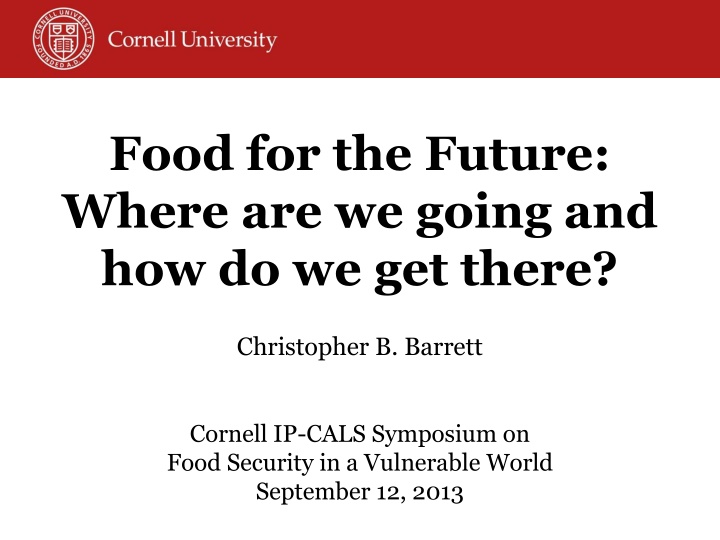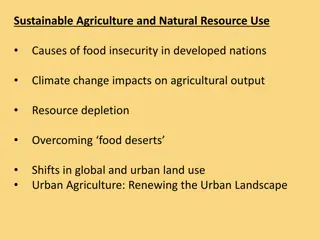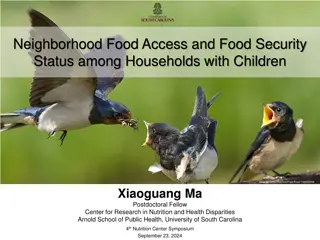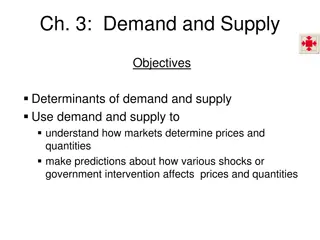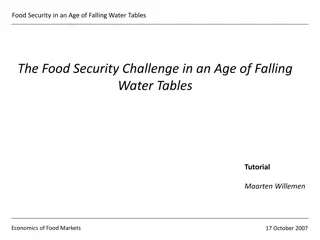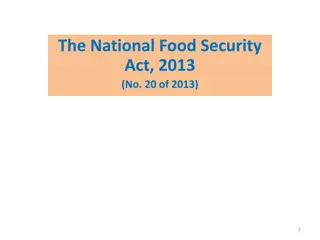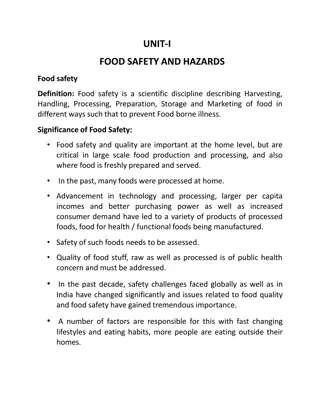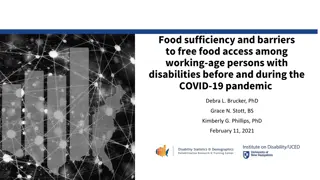Food Security and Future Demand: Challenges and Opportunities
Prevailing expert projections indicate a significant rise in global food demand by 2050, driven by population growth, urbanization, and income increase. The need to boost productivity growth, primarily in Africa and Asia, is crucial to meet future demands. Opportunities lie in policy reforms, market incentives, and sustainable practices to address threats such as food insecurity and resource depletion.
Download Presentation

Please find below an Image/Link to download the presentation.
The content on the website is provided AS IS for your information and personal use only. It may not be sold, licensed, or shared on other websites without obtaining consent from the author.If you encounter any issues during the download, it is possible that the publisher has removed the file from their server.
You are allowed to download the files provided on this website for personal or commercial use, subject to the condition that they are used lawfully. All files are the property of their respective owners.
The content on the website is provided AS IS for your information and personal use only. It may not be sold, licensed, or shared on other websites without obtaining consent from the author.
E N D
Presentation Transcript
Food for the Future: Where are we going and how do we get there? Christopher B. Barrett Cornell IP-CALS Symposium on Food Security in a Vulnerable World September 12, 2013
Demand side overview Prevailing expert projections anticipate that a more populous, urban, and wealthier global population will demand 70-100% more food by 2050 than the world consumes today. Why? - Population growth of ~2 bn people - Population will urbanize, up from 50% to 70% - Income growth 4-6%/yr in LDCs (>50% world output) - >90% of demand growth will be in Africa/Asia Can we reduce demand growth significantly? - Probably not. Very limited capacity to dramatically reduce food waste, overconsumption in diets, rebalance diets away from animal products, or eliminate food-biofuel competition
Supply-side overview Must grow supply by one of 3 means: more inputs, improved efficiency, new technologies 1. Capacity for extensification is low: - Outside Africa/Latin America, negligible open land - Ag uses 70% global freshwater (+ climate change!) - Marine capture fisheries stable or declining 2. Inefficiencies conditional on env t fairly low - Prod n/dist n systems exhibit limited waste - Existing inefficiencies hard to target/reduce 3. Technological change absolutely essential
Supply-side overview And productivity growth has to occur in Africa/Asia, where demand growth will occur because 85-90% of food is consumed within the country where it is grown, even with food trade growing faster than production.
Opportunities ahead Must use policy, market incentives, science to boost productivity growth in Africa/Asia through: Renewed donor/gov t attention to ag/NRM R&D Market signals and philanthropic/ private investment increasingly crowds in private investment Trade through international and domestic value chains, amplified by climate change but need to reduce domestic ag protection in OECD countries: >$1 billion/day in OECD subsidies to agriculture! Ag protection (19%) > manufact. (4%), energy (2%) Sustainability-oriented marketing to nudge consumer demand patterns
Threats ahead If we fail to accelerate productivity growth - Higher and more volatile food prices - Limited progress in reducing food insecurity - Increased frequency of resource- and food- related sociopolitical strife - More degradation of natural resources
Summary Past success proves the potential of food systems to reduce human suffering. This is challenge that, together, we can meet. Structural demand and supply patterns for food pose major challenges. Failure to meet these challenges quickly and decisively risk significant market, humanitarian and environmental impacts in coming decades. Must focus most attention where the needs will be greatest : in Africa and Asia.
